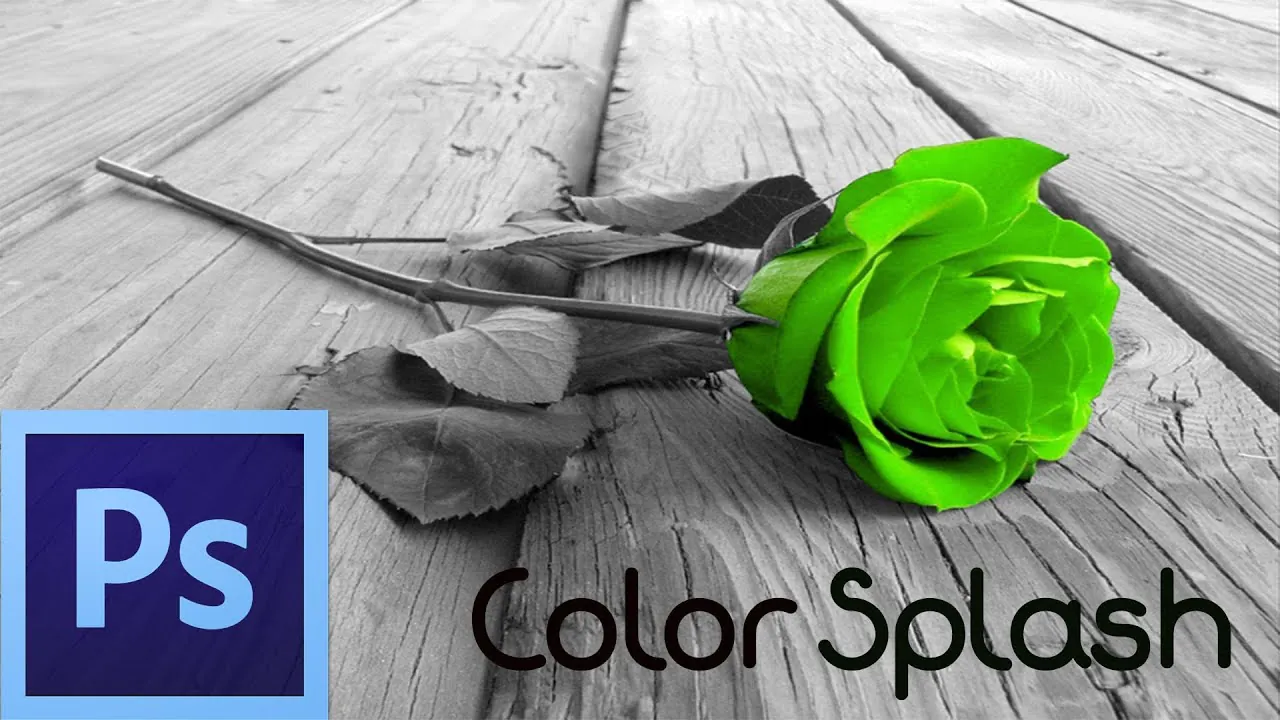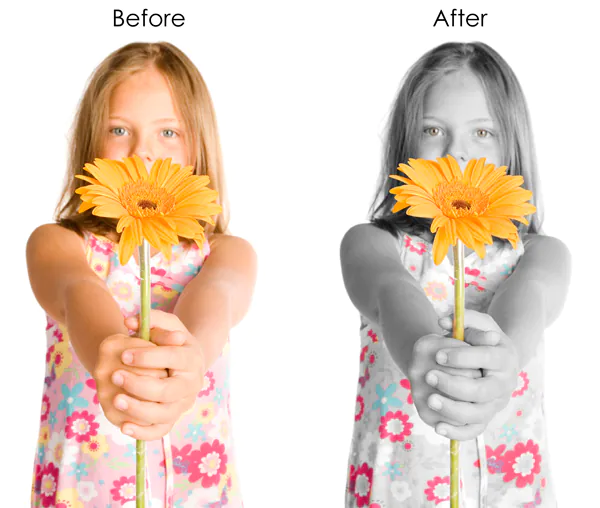
How to Infuse Vibrancy into Your Images with Colour Splash Effects
Creating colourful and alluring photographs is an ongoing endeavour in photography. Yet occasionally, you could see a picture that would look better with more colour and intensity. Colour splash effects can be used in this situation. Colour splashing is an artistic technique that deliberately highlights some portions of an image with brilliant colours while leaving the background in black and white or desaturated tones. This effective editing method lets you breathe new life and vitality into your pictures by highlighting details and generating a stunning contrast between colour and monochrome.
Tools and Software for Color Splash Effects
Proper tools and software are essential when creating stunning colour splash effects. These tools provide the necessary features and capabilities to achieve precise and stunning results. Let’s explore some popular options to help you master the art of colour splash.
Adobe Photoshop:
Photoshop is a powerhouse in photo editing and offers various tools for colour splash effects. With its selection tools, adjustment layers, brushes, and blending modes, Photoshop provides immense flexibility and control over the editing process. You can selectively add or enhance colours, adjust their opacity and blending modes, and create intricate masks for precise control.
Adobe Lightroom:
Lightroom is another popular photographer choice, known for its intuitive interface and comprehensive editing capabilities. While Lightroom doesn’t offer the same level of control as Photoshop, it provides a user-friendly approach to colour splash editing. With its selective adjustment tools, you can easily isolate specific areas and add vibrant colours or desaturate to achieve the desired effect.
GIMP:
GIMP (GNU Image Manipulation Program) is a free and open-source image editing software that offers powerful tools for colour splash effects. With its selection tools, layers, and brushes, GIMP allows you to isolate areas, apply colour modifications, and achieve stunning results. Even if it might not have all the modern features of commercial software, GIMP is a flexible choice for those on a limited budget or seeking open-source alternatives.
Mobile Editing Apps:
For those who prefer editing on the go, numerous mobile apps offer colour splash functionality. Apps like Snapseed, Adobe Photoshop Express, and Pixlr provide intuitive interfaces and tools for selective colour adjustments. These apps are convenient for quick edits and allow you to directly transform your images with colour splash effects from your smartphone or tablet.
Online Editors:
Online editors can be a viable option if you need access to specialized editing software or prefer not to install applications on your device. Websites like Fotor, Pixlr X, and Photopea offer web-based editing tools, including features for colour splash effects. These online editors provide a range of tools and adjustments similar to desktop software, accessible directly from your web browser.
When choosing your editing software or app, consider the level of control and features you require. Evaluate the interface, ease of use, and compatibility with your workflow. Whether you opt for professional software, mobile apps, or online editors, the goal is to have a tool that empowers you to achieve your desired colour splash effects efficiently and effectively.
In addition to these software options, it’s important to have a valid computer or mobile device with sufficient processing power and memory to handle the editing process smoothly. High-resolution images and complex edits may require more computing resources, so ensure your equipment can handle the demands of your editing workflow.
As you delve into colour splash editing, explore tutorials, guides, and forums dedicated to these software options. They can provide valuable insights, tips, and techniques specific to your chosen tools, allowing you to maximize your creative potential and achieve professional-level results.
Remember, the software you use is just a tool; your creative vision and understanding of colour will ultimately bring life and vibrancy to your images. Experiment, practice, and push the boundaries of your creativity using the tools at your disposal. With the right software and your artistic skills, You’ll be able to become an expert at the art of colour splash and transform your photographs into visually captivating works of art.
Techniques for Creating Striking Color Splash Effects
Colour splash effects offer a captivating way to add vibrancy and visual impact to your photographs. By selectively highlighting specific areas with vibrant colours while keeping the remainder of the image in black and white or desaturated tones, you can create stunning contrasts and draw attention to key elements within the frame. Some techniques for achieving striking colour splash effects include:
Selective Colorization:
Selective colourization involves isolating a specific area or subject within your image and adding colour only to that part. Using this technique, you can highlight a certain area of the image and make it stand out from the background. Here’s how to apply selective colourization:
Open your image in photo editing software with selection tools such as Adobe Photoshop or GIMP.
Use the brush or lasso selection tool to define the area you want to colourize precisely.
Once selected, apply vibrant colours to the chosen region while leaving the rest of the image in black and white or desaturated tones.
Adjust the opacity and blending modes of the colour layer to fine-tune the effect and achieve the desired result.
Colour Overlay:
Colour overlay involves applying a transparent coloured layer over the entire image and then erasing or masking out the areas where you want the original colours to appear. This technique can create a more subtle colour splash effect by adding a tint or hue to specific elements while maintaining some actual colours. Here’s how to apply a colour overlay:
Open your image in photo editing software.
AfterCreate a new layer and fill it with the desired colour.
Adjust the opacity of the colour layer to achieve the desired intensity.
Use eraser tools or layer masks to selectively reveal the original colours in specific areas, allowing them to show through the colour overlay.
Gradient Color Splash:
Gradient colour splash involves applying a gradient of colours to your image, gradually transitioning from one colour to another. This technique can be particularly effective for landscapes or portraits with large areas of the same colour. Here’s how to apply a gradient colour splash:
Open your image in photo editing software.
After creating a new layer, apply a gradient fill using the colours of your choice.
Adjust the opacity and blending modes of the gradient layer to achieve the desired effect.
Use masking techniques to reveal the gradient colours selectively in specific areas of the image, creating a smooth transition from one shade to another.
Brush Techniques:
Various brush techniques can add depth and creativity to your colour splash effects. Experiment with different brush sizes, opacity levels, and blending modes to achieve exceptional results. You can use brushes to:
Paint vibrant colours onto specific areas of your image.
Create subtle colour accents by lightly brushing over certain elements.
Blend colours for a seamless transition or create textured effects.
Use custom brush shapes or textures to add interest and complexity to your colour splash.
Textured Overlays:
Adding textured overlays to your colour splash effects can enhance the overall visual impact and give your images a unique look. Textures can add depth, detail, and interest to specific areas of the picture. Here’s how to incorporate textured overlays:
Find or create textured overlays such as grunge textures, paper textures, or bokeh overlays.
Open your image and the textured overlay in photo editing software.
Place the textured overlay on top of your image and adjust the blending modes and opacity to integrate it seamlessly.
Use masking techniques to selectively reveal the texture in specific areas, enhancing the overall effect of the colour splash.
Multiple Color Splashes:
Don’t limit yourself to a single colour splash. You can create multiple colour splashes within a single image to highlight different elements or create a more dynamic composition. Experiment with combining different colours, shapes, and sizes to achieve a visually stunning result. Consider these tips:
Select distinct areas or subjects within your image to colourize separately.
Ensure the colour splashes complement each other and maintain a balanced composition.
Adjust each colour splash’s opacity and blending modes to create a cohesive and harmonious effect.
Blend Modes and Opacity Adjustments:
Experimenting with blend modes and opacity adjustments can greatly impact your colour splash effects’ final look and feel. Different blend modes can produce unique interactions between colours, while opacity adjustments can fine-tune the intensity of the colour splash. Explore various blend modes such as Screen, Overlay, Soft Light, or Multiply, and adjust the opacity to achieve the desired effect.
Remember, while these techniques provide a starting point, no strict rules exist for creating colour splash effects. Let your creativity and artistic vision guide you as you explore different approaches and experiment with various tools and techniques. Each image is unique, and finding the right combination of techniques will result in stunning and personalized colour splash effects. Embrace the creative process, have fun, and let your imagination run wild as you infuse your images with vibrant colours using these techniques for colour splash effects.
Conclusion
In conclusion, colour splash effects offer a versatile and captivating way to infuse vibrancy into your photographs. By selectively highlighting specific areas with vibrant colours while keeping remained of the image in black and white or desaturated tones, you can create striking contrasts and draw attention to key elements. Through techniques such as selective colourization, colour overlays, gradients, brushwork, textured overlays, and multiple colour splashes, you can unleash your creativity and transform ordinary images into visually captivating works of art.





